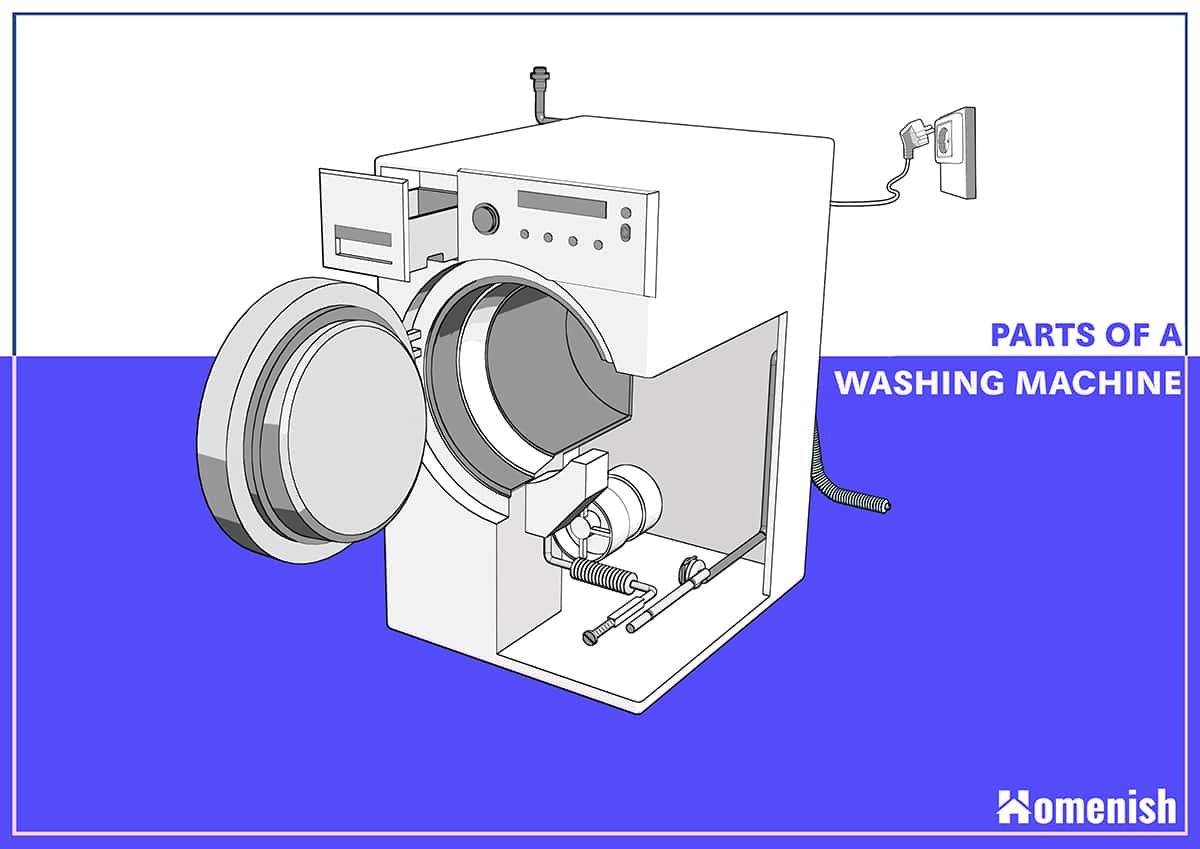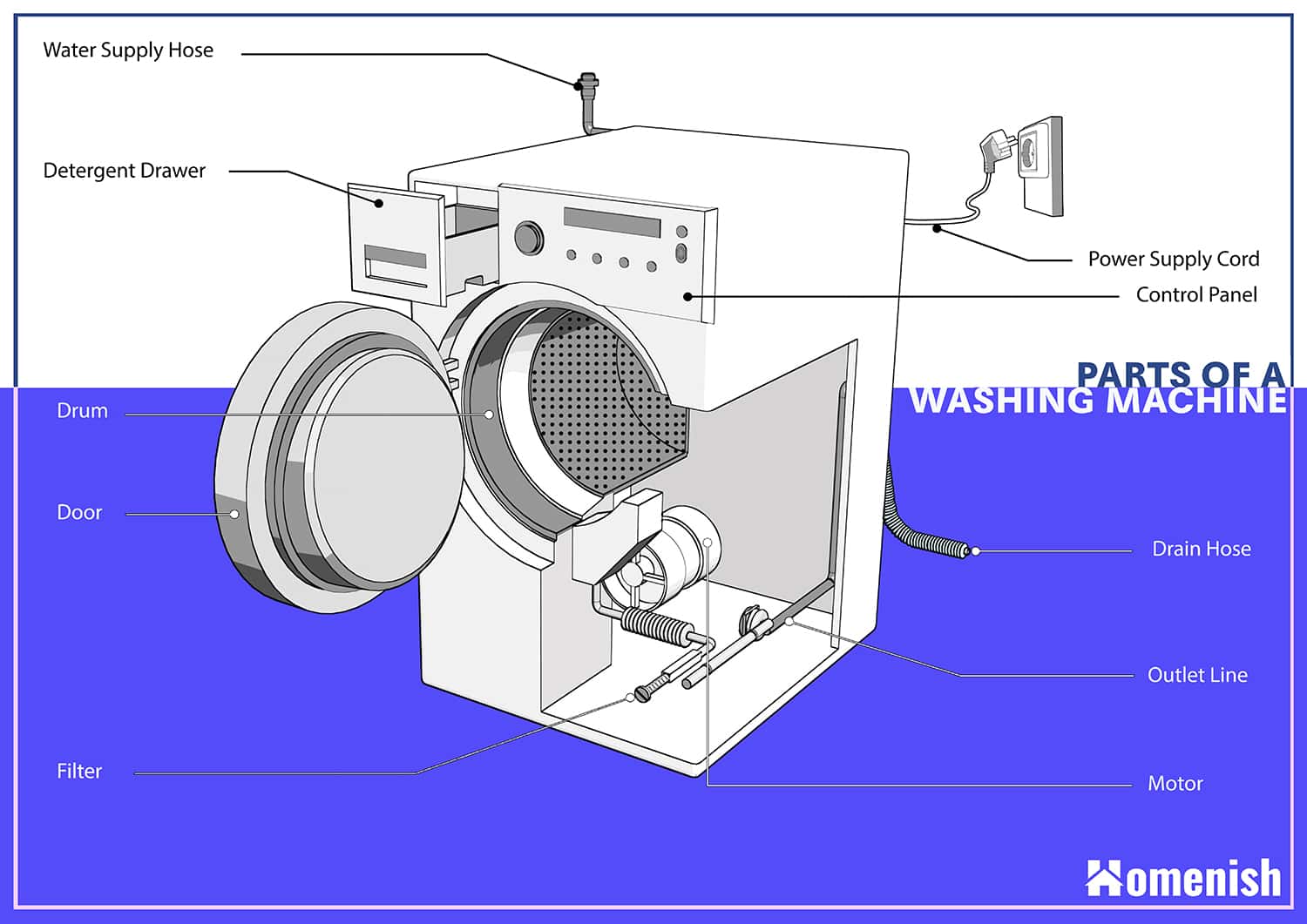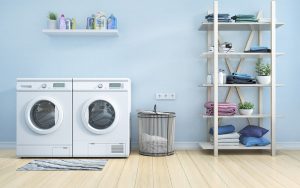A washing machine is a necessity for most people, which is used on a daily basis to wash stains and odors out of clothing, towels, bed linen, and any other fabric items you want to launder. Although most of us are closely acquainted with our washing machines, the integral parts of a washing machine remain a mystery.
The vast majority of washing machine users will never think about the inner workings of the machine until it breaks down or starts behaving in a way that it shouldn’t.
Understanding the different components of a washing machine and how each part works can help you to figure out what the issue is when your washing machine has a problem, which means you can get it fixed more easily and probably save yourself some time and money in the process.
Here we look at the anatomy of a washing machine and the role that each one plays in the overall workings of the appliance. You may find this 3D diagram in handy when reading the descriptions of each part of a washing machine.
Water pump
The water pump has two vital jobs in a washing machine. It is responsible for circulating the water in the drum or tub during a washing cycle, and it also drains the water away from the machine when the cycle is finished.
In some machines, there will be two separate water pumps; one to drain via the drain hose and one to circulate water via the water supply hose, while in other machines, one water pump will be able to fulfill both tasks.
The position of the water pump is always inside the machine, so it cannot be seen from the outside, and it is usually near the base of the washing machine.
Drainpipe
The drain pipe will be located in close proximity to the water pump that drains water from the drum, and the drainpipe has the job of carrying the dirty water away from the washing machine after a cycle has finished.
Water Supply Hose
The water supply hose or water inlet valves are located next to the water inlet point, where water is delivered to the inside of the drum or tub during a wash cycle. When laundry is loaded into the drum, the water inlet valves will open, allowing water to flow into the drum and be used for cleaning the laundry.
The valves will open and close to allow water to flow and stop the water flow, depending on how much water is required for the cycle of laundry.
Drum or tub
The drum or tub is the same part of the washing machine, but it is referred to as either a tub or drum depending on your region. A washing machine will have two tubs; one that you can see and one that you can’t.
The inner tub is where you will load laundry into the washing machine, and it has holes in it that allow water to flow in during a wash cycle and away when the cycle ends. The outer tub is used to support the inner tub, and it also holds the water during a cycle of washing.
Agitator, impeller, or paddles
The type of washing machine you have will determine whether you have an agitator, impeller, or paddles inside the tub. These components of the washing machine all work in different ways, but they all perform the same ultimate job.
These parts are designed to rub the laundry together so that the detergent can penetrate the fabrics and remove dirt better. An agitator is a thick rod in the middle of the tub that has plastic blades around it, and it rotates to produce strong water currents within the washing machine tub, which will cause the laundry items to bash against each other.
An impeller is a flat disc shape with blades on one side, and this also works by rotating to create currents in the washing water. In front-loading washing machines, there are blades fixed to the inside perimeter of the inner tub, and these will create water currents when the inner tub spins.
These components of a washing machine are extremely important because without them, the clothing would not rub together, making the detergent much less effective.
Motor
The motor is the part of a washing machine that powers the agitator, impeller, or movement of the inner tub. In top loading washing machines, it will be positioned at the base of the machine, underneath the agitator.
Circuit board
The circuit board is where all of the decisions are made for your machine, such as how much water to load into the drum and how long a cycle runs. It also triggers the electrical parts of your machine that control different elements.
Timer
All washing machines have timers, but whether or not you can manually set them will differ between models. If you have a manual timer, you will be able to set it to come on at a specific time of day. For example, you may load your laundry into the washing machine in the evening when you get home from work, but you don’t want it to run the cycle straight away because it is too noisy.
Instead, you can manually set the timer so that the cycle begins at 9am the following morning when it won’t disturb anyone.
Control panel
The control panel on the washing machine will have buttons or dials that the user can operate to choose different settings. For example, you might want to change the temperature of the water or select a gentle wash for delicate items. The control panel will also have the power button on it.
Heating element
Some modern washing machines have heating elements that will heat up the water to the desired temperature for your cycle. For example, water with a higher temperature is better for removing severe stains, while cooler water is more cost-effective and better for the environment if your laundry just needs a light refresh.
Washing machines without heating elements may have an external hot water supply for hot cycles, or they may just run cold cycles.
Filter
Some washing machines have a filter, whose functions are to filter out things you don’t want being held in the washing machine like wet lint, loose hair, and dirt. It is recommended that you check and clean the filter every 4 months for any build-up and to ensure the water pump runs effectively.







